In a world that often feels fast-paced and noisy, calm dog breeds offer a refreshing sense of peace and companionship. These gentle canines are ideal for anyone seeking a relaxed, low-stress pet who thrives on affection and quiet moments. Whether you’re living in an apartment, working from home, or simply prefer a more serene lifestyle, a mellow dog can bring balance and warmth to your daily routine.
While some dogs are wired for endless energy, other dogs are naturally laid-back, preferring cuddles on the couch over chasing squirrels. Calm breeds tend to be less reactive to noise, more predictable in their behavior, and content with moderate activity. They’re often friendly, tolerant, and enjoy human company without demanding constant stimulation. These dogs can also make great companions for seniors or families with young children due to their even temperaments.
This article explores the calmest dog breeds that combine quiet dispositions with affectionate hearts. They might not be the loudest in the park, but they’re the ones that bring tranquility home.
Calm Dog Breeds
1. Basset Hound
The Basset Hound, affectionately known as the “Basset,” hails from France and Belgium where it was historically bred for trailing small game like hares and rabbits. According to the AKC, the Basset Hound is known for being patient and low-key. Recognized by the American Kennel Club in 1885, this breed belongs to the Hound group.
These calm and low-energy dogs are known for their short legs, heavy bone structure, and long, droopy ears. With an average height of up to 15 inches and a weight range of 40 to 65 pounds, Basset Hounds are compact yet sturdy companions.
Their soulful eyes, pendulous ears, and a coat of various color combinations give them a distinctive and endearing appearance. Despite being natural scent hounds with a nose nearly as sharp as a Bloodhound’s, they’re famously laid-back and gentle in demeanor, making them ideal for relaxed households. Basset Hounds typically enjoy a life span of 12 to 13 years.
Care Needs
Though calm by nature, Basset Hounds require daily exercise—ideally about an hour—to maintain a healthy weight and prevent boredom. Their long bodies and short legs mean exercise should be moderate to avoid joint strain, especially in puppies.
Secure areas for off-leash exploration and puzzle games help meet their physical and mental stimulation needs. Grooming is minimal; a weekly brushing and regular dental care usually suffice.
Did you know? The Basset Hound inspired the Hush Puppies shoe brand and once shared the stage with Elvis Presley on national television.
2. Cavalier King Charles Spaniel
The Cavalier King Charles Spaniel, affectionately called the “Cavalier” or “Cavie,” is a noble toy breed that originated in England. It descends from the English Toy Spaniel and was developed in the early 1900s to resemble the spaniels popular during King Charles II’s reign.
Standing at about 12 to 13 inches and weighing between 13 and 18 pounds, these dogs are adored for their feathered ears, expressive eyes, and silky coats that come in four distinct color patterns.
Known for their affectionate temperament and graceful demeanor, Cavaliers fit seamlessly into family life, whether as lap dog or cheerful playmates. With a life expectancy of 12 to 14 years, they are devoted pets known for their adaptability and eagerness to please.
Care Needs
Cavalier King Charles Spaniels have moderate exercise needs, thriving with daily short walks or gentle playtime in the yard. They’re equally content lounging at home or engaging in brief activities with their families. Purina states that Cavaliers are a versatile breed, thriving with both active pet parents and in more relaxed households.
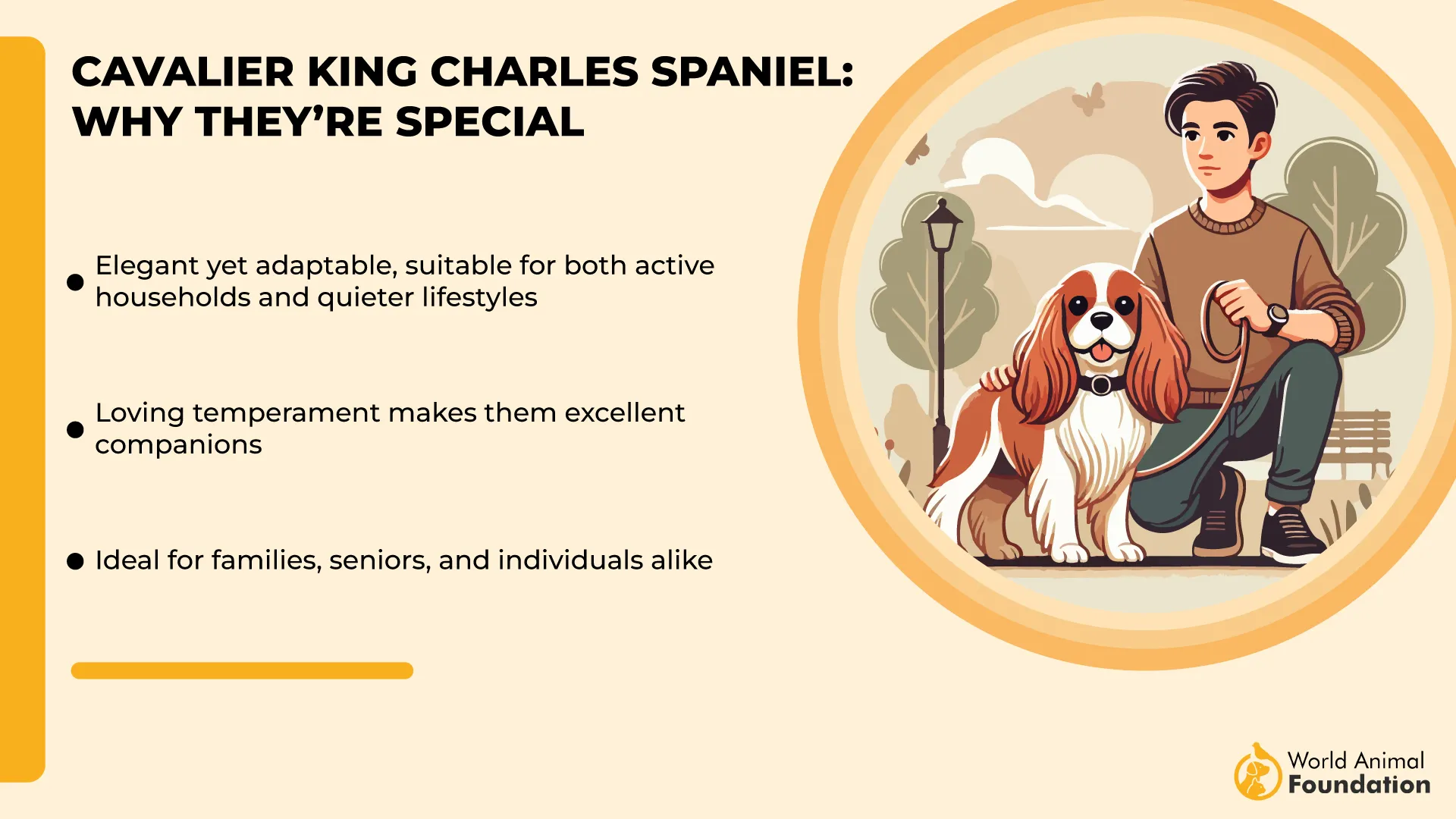
Regular grooming is essential due to their long, silky coat—brushing a few times a week helps prevent tangles and mats. Dental care, such as brushing teeth twice a week, and routine vet visits ensure overall wellness. They are low-maintenance in energy but high in affection and companionship.
Fun Fact: U.S. President Ronald Reagan gifted his wife Nancy a Cavalier named Rex, who once turned on the White House Christmas lights.
3. English Bulldog
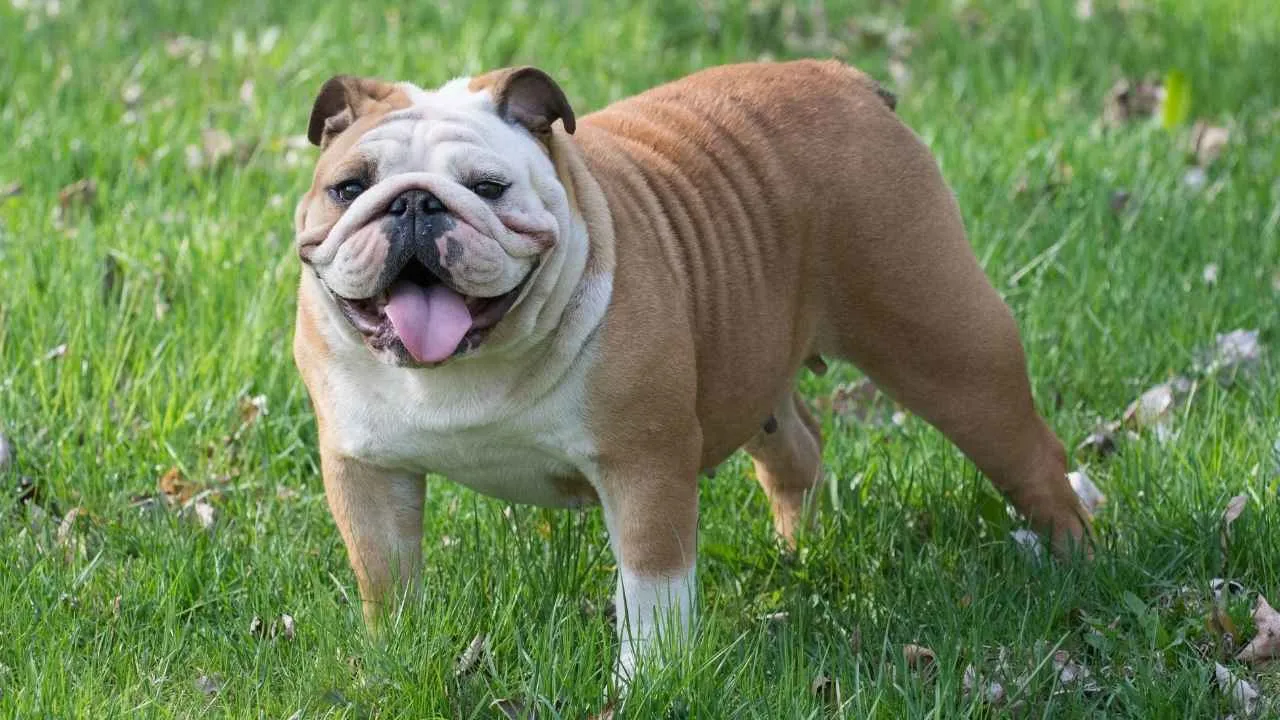
The English Bulldog, also known as the British Bulldog or “Sourmug,” originated in 13th-century England, initially bred for the now-banned sport of bullbaiting. PetMD states that the English Bulldog usually has a friendly temperament and can be an excellent family companion.
Despite its intimidating appearance—muscular build, broad shoulders, deep chest, and loose facial wrinkles—today’s English Bulldog is a gentle, affectionate companion. Typically weighing between 40 to 50 pounds and standing 13 to 15 inches tall, this breed is renowned for its loyalty and calm temperament.
The Bulldog is part of the Non-Sporting group and has a lifespan of 8 to 10 years. Their unmistakable short snout and stocky frame give them a waddling gait and a snort-filled personality.
Care Needs
While Bulldogs are low-energy and love lounging indoors, they still need light daily exercise like short walks or indoor play to prevent weight gain. Their brachycephalic nature makes them prone to overheating, so they should avoid hot climates and intense activity.
Routine grooming includes cleaning their facial wrinkles and monitoring for skin infections. Access to cool, shaded environments is essential in warm weather.
Fun Fact: The English Bulldog is considered a national symbol of Great Britain and was famously associated with Winston Churchill, who even owned a Bulldog named Dodo.
4. Great Dane
Known as the “Apollo of Dogs,” the Great Dane is one of the tallest dog breeds, often standing between 28 and 32 inches tall and weighing 110 to 175 pounds. Despite their imposing stature, these giants are calm, gentle, and affectionate—earning the nickname “Gentle Giant.” PDSA describes Great Danes as true gentle giants, full of love and affection for their families.
Originating over 400 years ago in Germany, Great Danes were once used to hunt wild boar and guard estates. Bred from a mix of Irish Wolfhounds and Old English Mastiffs, the breed has evolved into a devoted family companion that thrives on human interaction and offers a patient and affectionate presence.
Care Needs
Although Great Danes enjoy lounging, they still require daily walks to maintain a healthy weight and muscle tone. Their joints are delicate during puppyhood, so exercise should be low-impact until they fully mature.
They are relatively low-maintenance in terms of grooming due to their short coat, but regular brushing helps manage shedding. Due to their large size, a spacious home and soft bedding are ideal for joint comfort.
Fun Fact: Great Danes are the official state dog of Pennsylvania and have starred in classics like Marmaduke and The Ugly Dachshund.
5. Greyhound
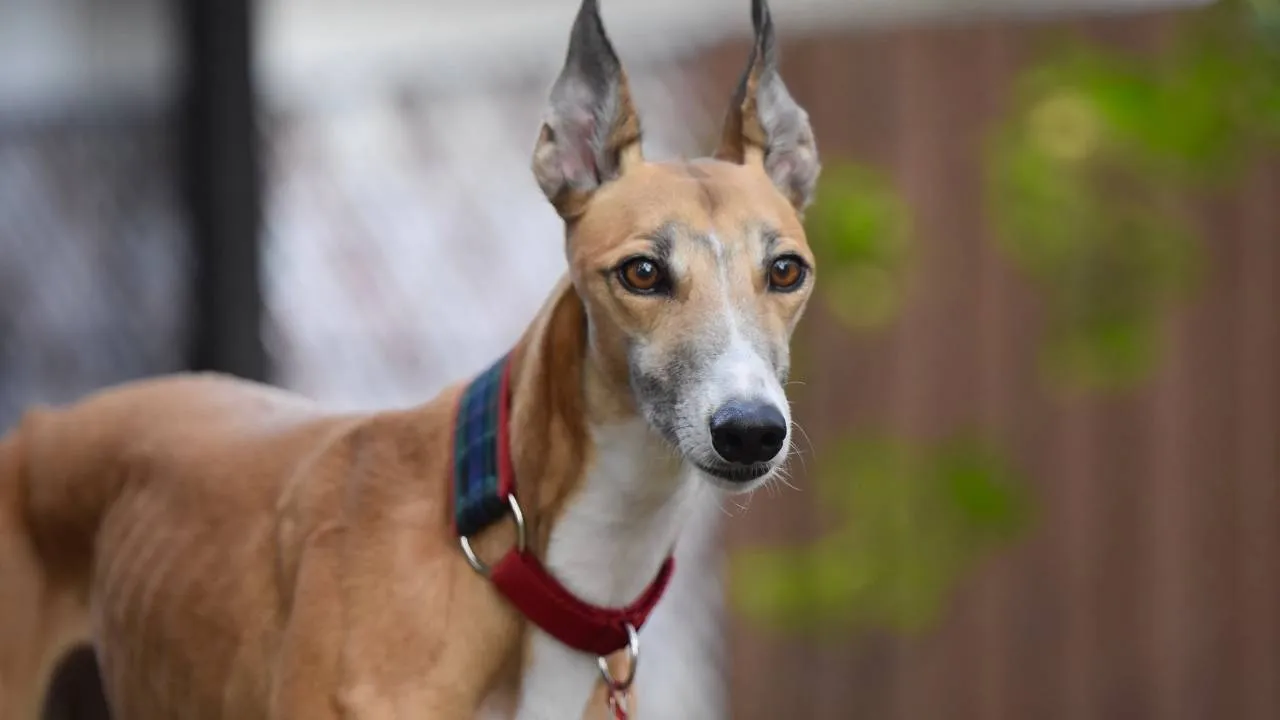
Known for their sleek physique and record-breaking speed, Greyhounds are among the oldest and calmest dog breeds. Originating in ancient Egypt, this aristocratic hound has graced tombs dating back to 3000 BCE and was once the favorite of historical figures like Alexander the Great.
Despite their fame as racing dogs, Greyhounds are surprisingly docile and make serene companions. Males typically stand between 28–30 inches tall and weigh 60–80 pounds, while females are slightly smaller. Their short, smooth coats can appear in a wide variety of colors including black, fawn, brindle, and white. These gentle dogs belong to the hound group and typically live 10–13 years.
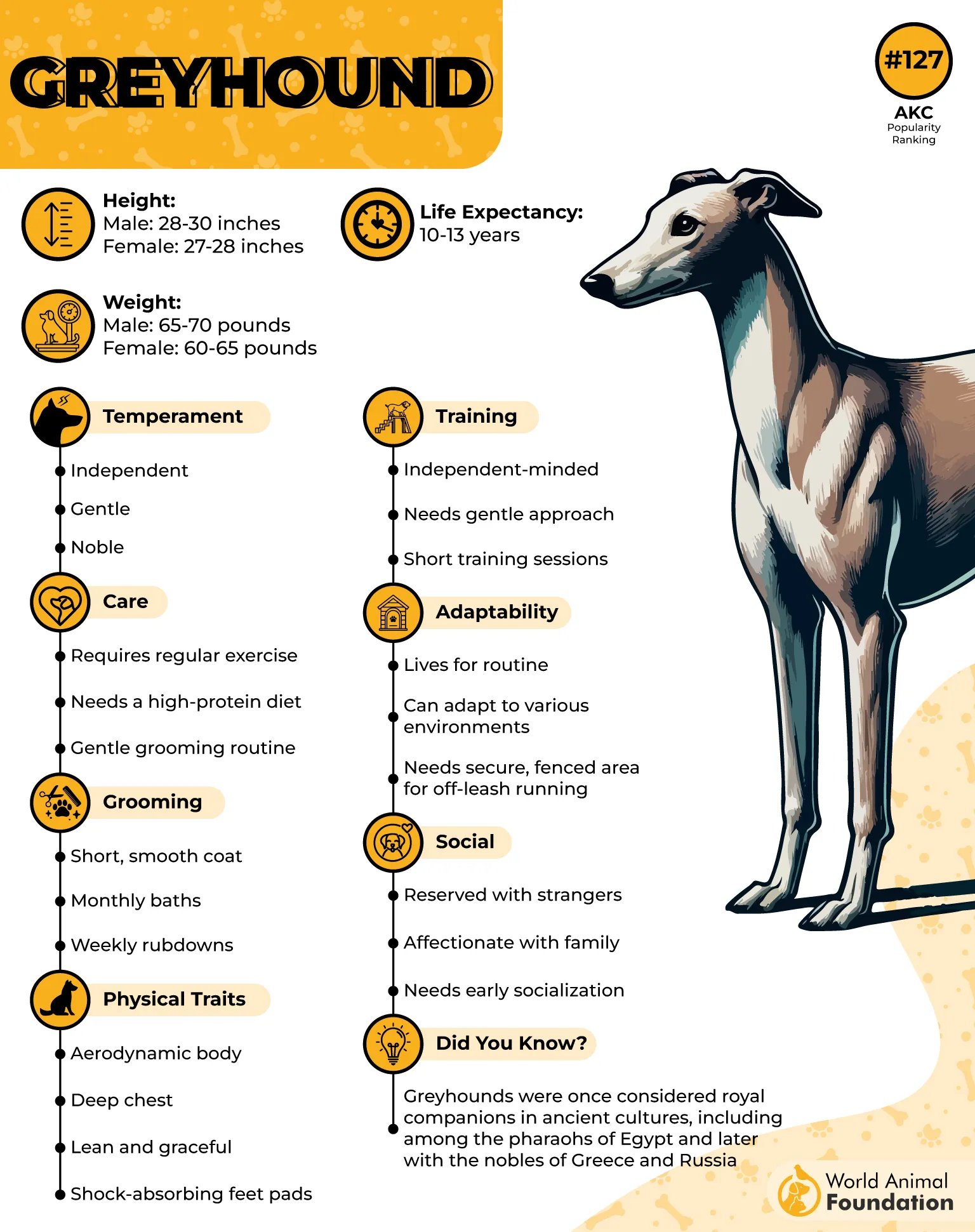
Care Needs
Though bred for speed, these affectionate dogs are relaxed and low-maintenance at home. A brisk daily walk and occasional sprint in a fenced yard are sufficient to meet their exercise needs. Because of their low body fat and short coats, they are sensitive to cold and should be kept warm in chilly weather.
Grooming is minimal—occasional brushing keeps their sleek coat in good condition. However, due to their racing background, Greyhounds may have a high prey drive, so caution is advised around small pets.
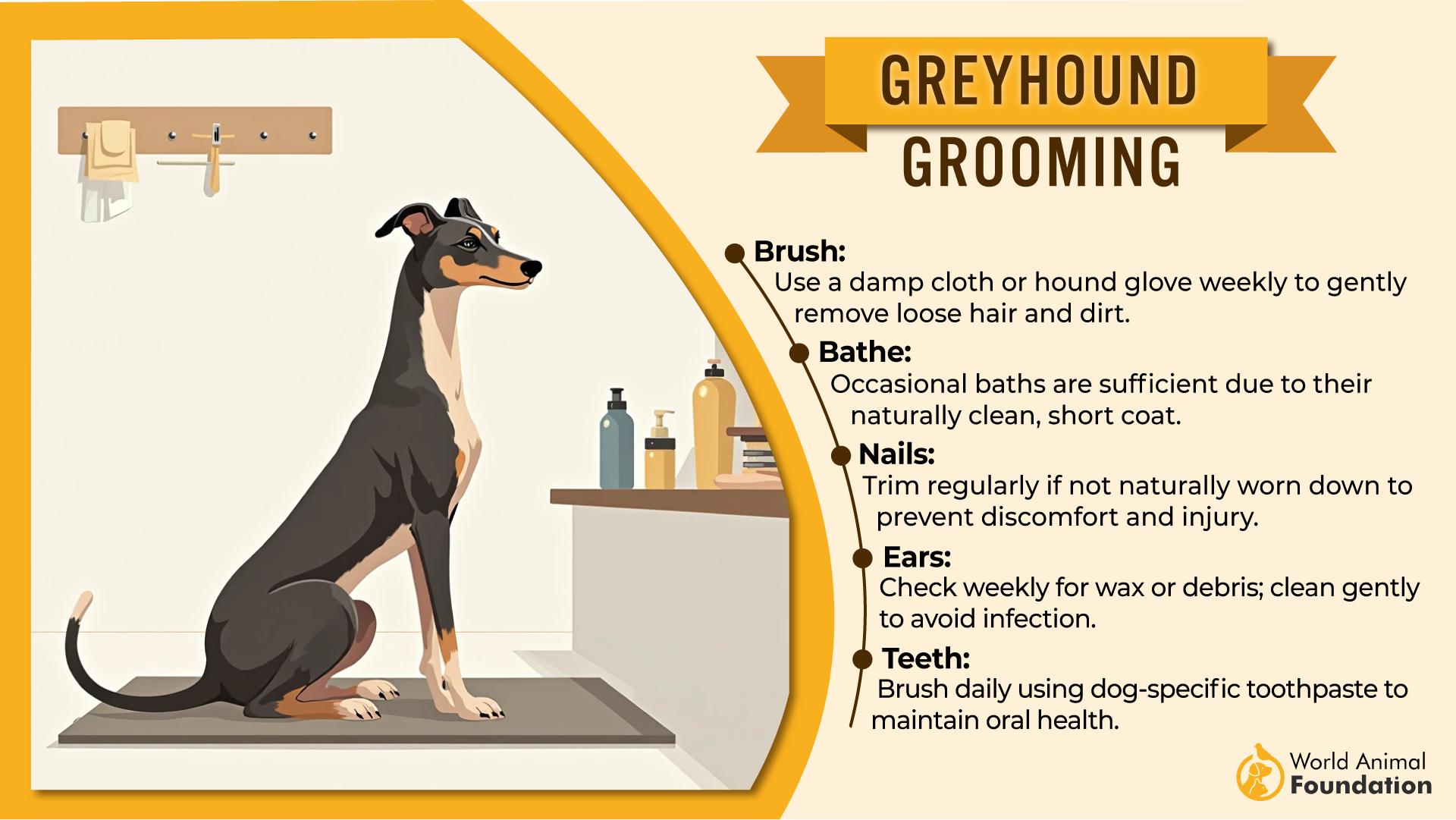
Fun Fact: Greyhounds are the fastest dog breed, capable of reaching speeds up to 45 miles per hour.
6. Newfoundland
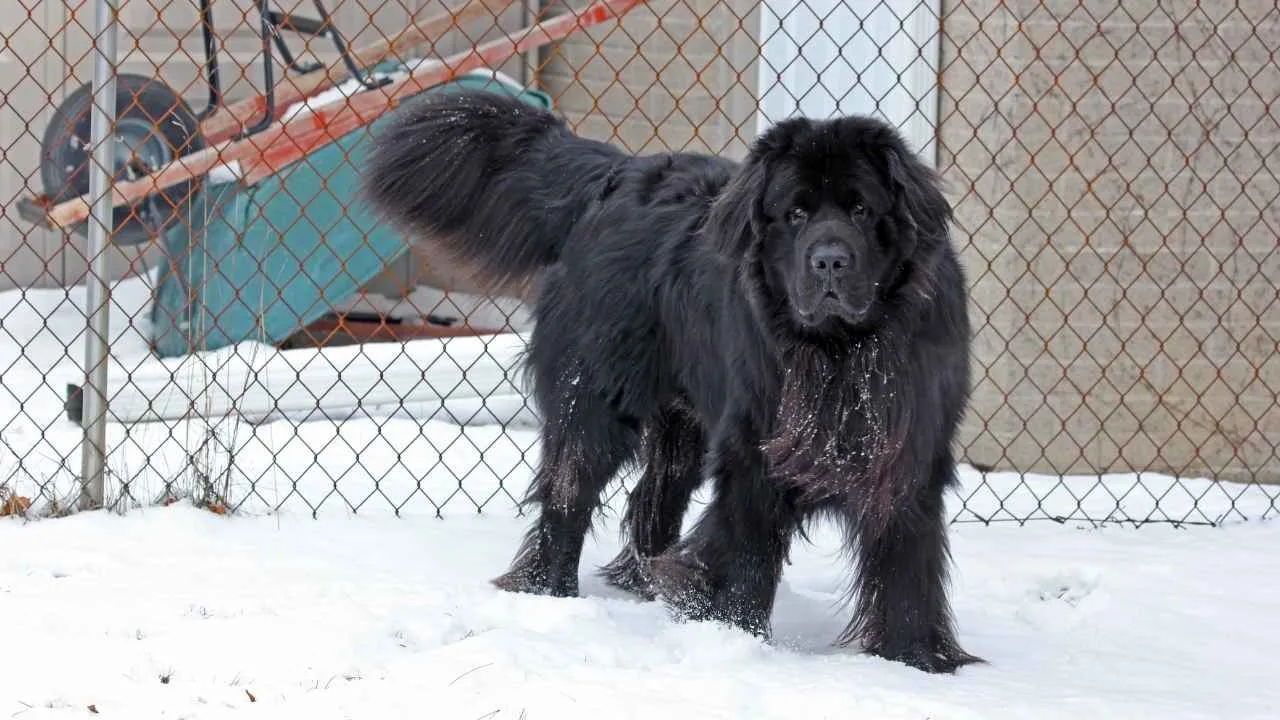
Hailing from Newfoundland island in Canada, the Newfoundland—fondly known as the Newf or Newfie—is a gentle giant with a rich heritage as a working and rescue dog. These massive canines stand between 26 to 28 inches tall and weigh anywhere from 100 to 150 pounds.
With their thick, water-resistant double coats, webbed feet, and powerful hindquarters, they were bred for pulling loads and saving people from icy waters. Despite their size, Newfoundlands are famously calm, patient, and affectionate, earning them the nickname “nanny dog” for their nurturing behavior toward children. They belong to the Working Group and have a life expectancy of around 9–10 years.
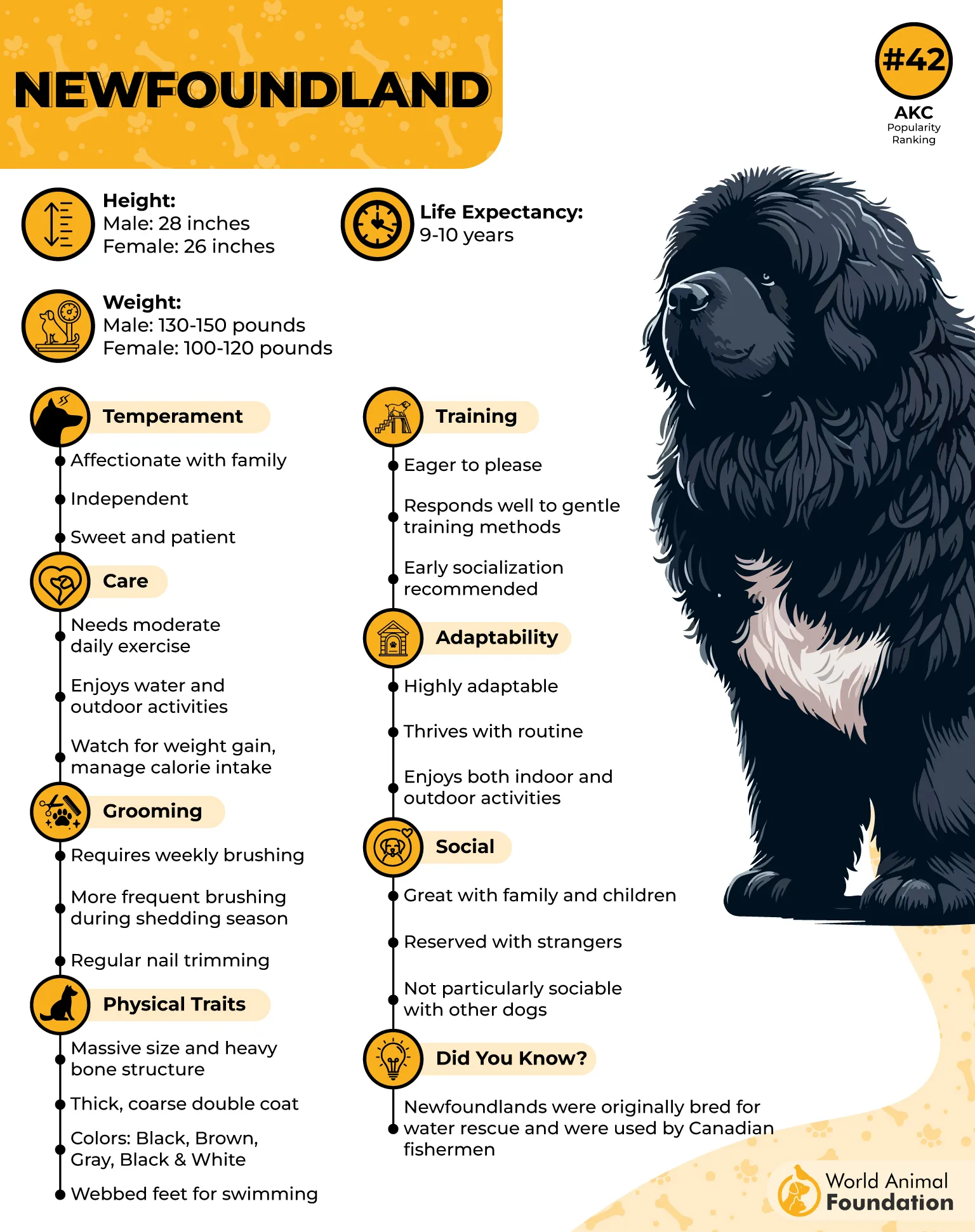
Care Needs
Newfoundlands require consistent grooming due to their thick double coat, which sheds year-round. Brushing multiple times a week helps control loose hair and maintain coat health. They also drool frequently, so daily wipe-downs are helpful.
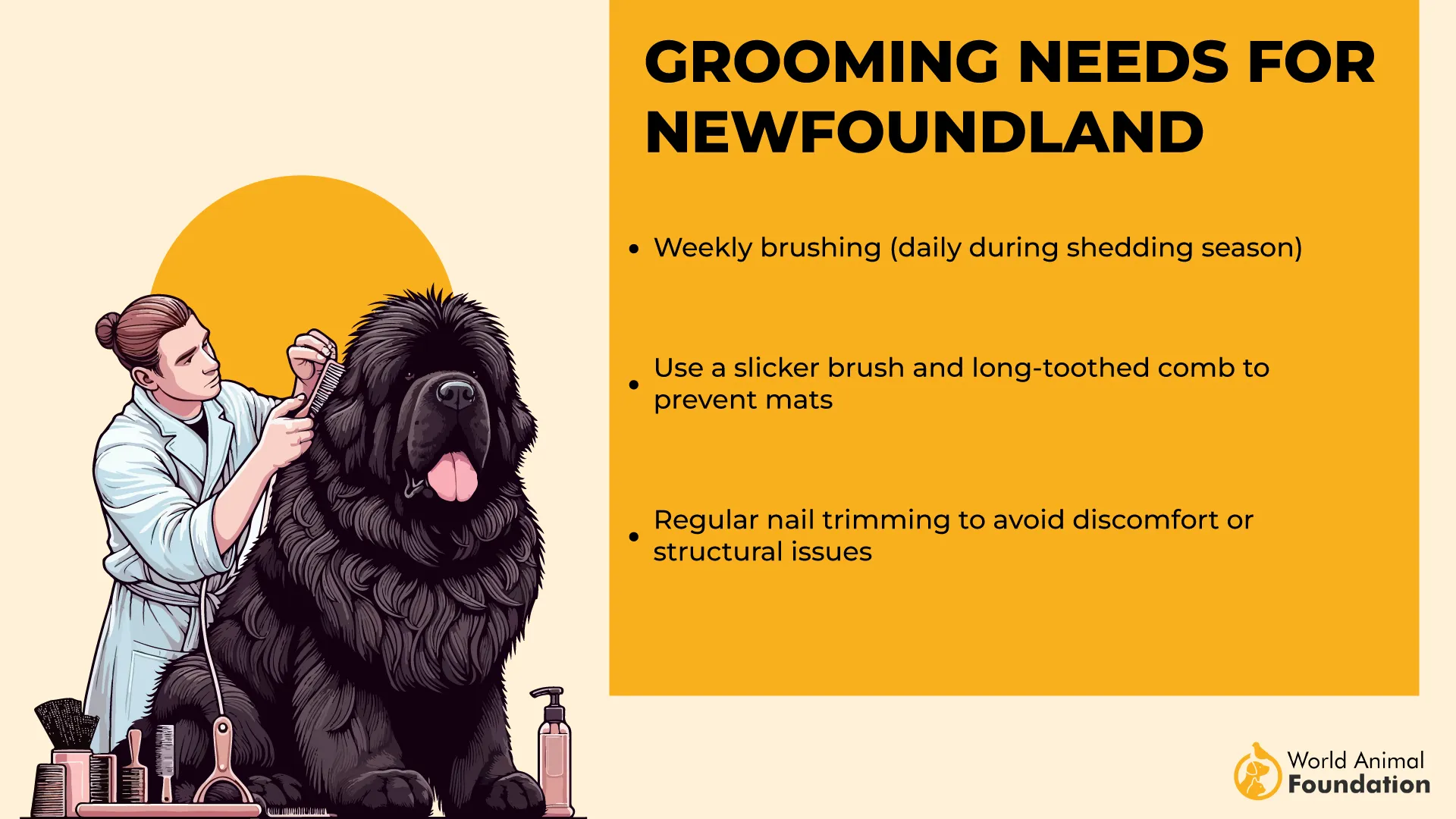
While their energy levels are moderate, daily walks and opportunities for swimming are beneficial for both their physical and mental well-being. Keeping their large joints healthy is essential, especially with their considerable size. Routine ear cleaning and dental care should also be part of their regimen.
Fact: A Newfoundland reportedly saved Napoleon Bonaparte from drowning during his 1815 escape from exile on Elba Island.
7. Saint Bernard
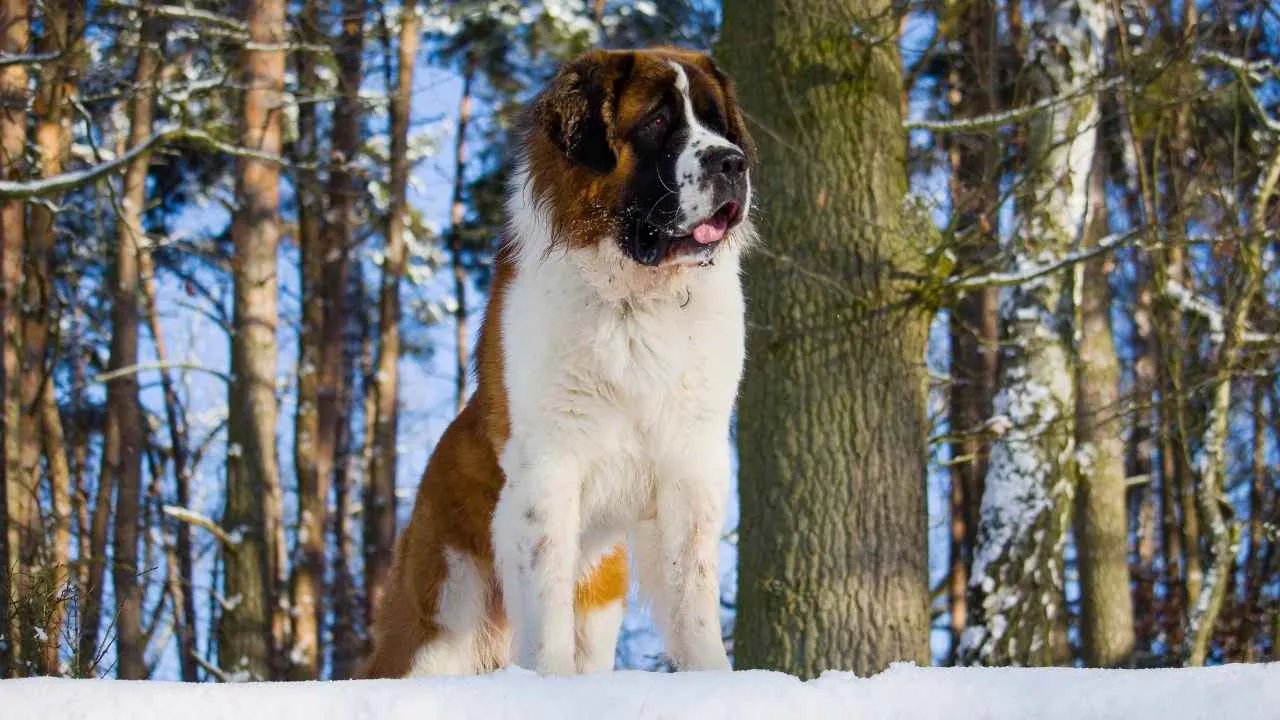
Originating from the snowy Pennine Alps of Switzerland, the Saint Bernard is a giant yet gentle working breed, famously associated with alpine rescue missions. Developed by monks at the hospice of Saint Bernard in the 16th and 17th centuries, this powerful dog was bred to navigate snowbound trails and aid lost travelers.
Known for their deep loyalty, calm demeanor, and affection toward children, Saint Bernards have earned the nickname “nanny dogs.” They typically weigh between 120 and 180 pounds and stand about 26–30 inches tall. With their massive frame, expressive eyes, and deep bark, they are both imposing and endearing. These dogs belong to the Working group and have a life expectancy of 8 to 10 years.
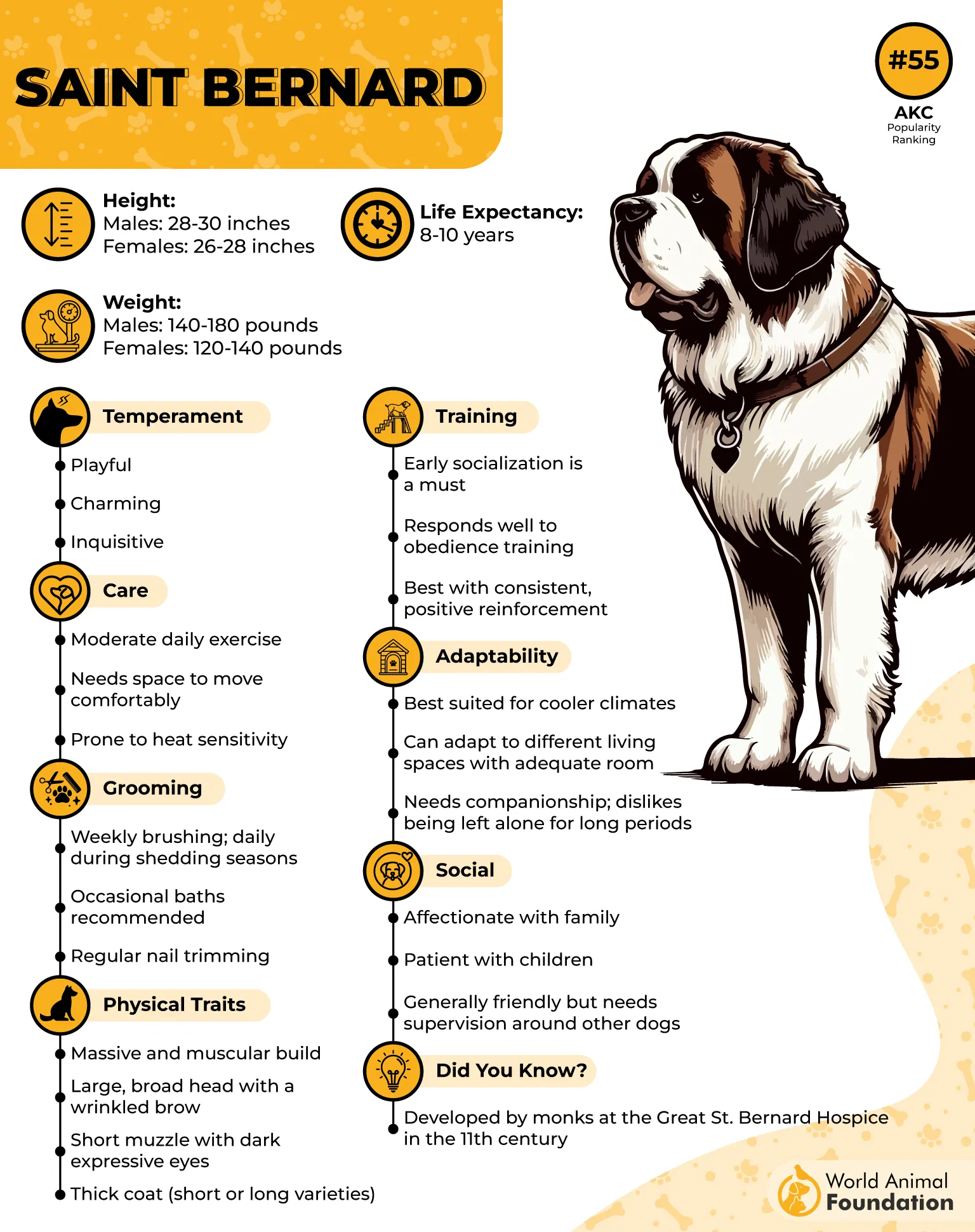
Care Needs
Though Saint Bernards have thick, shed-prone coats, they don’t require excessive maintenance. Regular brushing, ideally three times a week, helps control shedding and keeps their coat healthy. Professional grooming every few months can be beneficial. Their size makes joint care and proper weight management critical.
Daily walks and light activity suit their low-energy nature, while indoor relaxation is their preference. Be prepared for occasional drooling. Despite common myths, they never actually carried brandy barrels during rescues—a misconception popularized by 19th-century art.
Conclusion
Choosing the right companion goes beyond cuteness or popularity, especially when you’re seeking peace, stability, and companionship. Calm dog breeds, whether towering like the Saint Bernard or low-slung like the Basset Hound, offer a comforting presence and an even temperament that’s ideal for homes with children, retirees, or anyone in search of a relaxed lifestyle. These breeds are known for their affectionate nature, gentle disposition, and low reactivity, making them perfect for both city apartments and quiet suburban homes.
From loyal giants to gentle small dogs, there’s a calm breed for everyone. While some terrier breeds, like the Cairn Terrier, might be known for their spirited nature, they too can exhibit balanced temperaments when well-trained. Likewise, affectionate companions such as the Cocker Spaniel combine friendliness with a peaceful demeanor. Even large guard dogs can show remarkable patience and composure when properly socialized. Ultimately, calm dogs bring more than tranquility, they bring connection, loyalty, and unwavering comfort to every kind of household.


